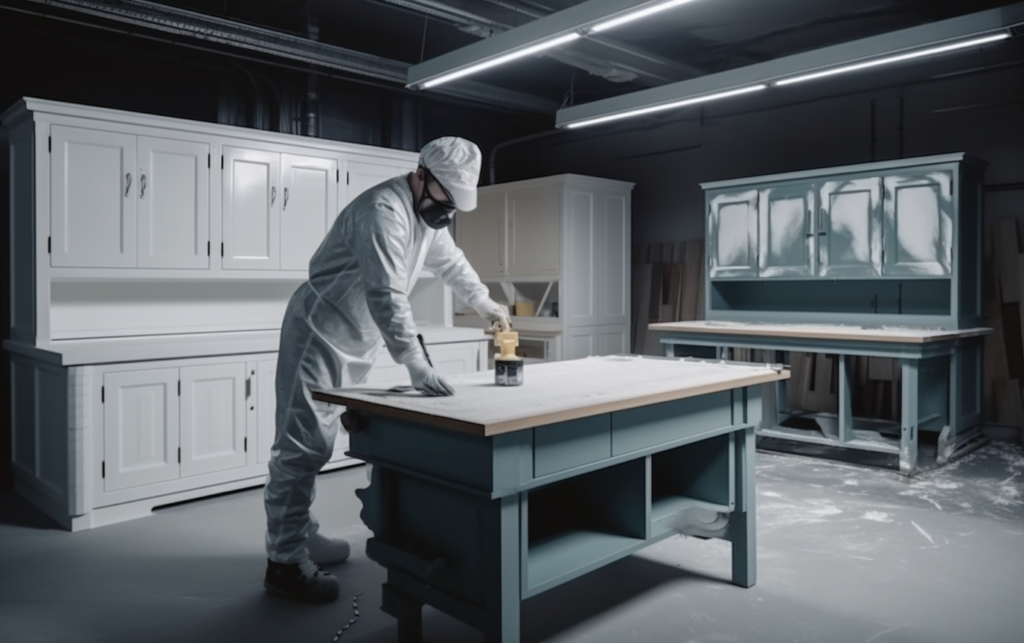A Guide to MDF Spraying: Everything You Need to Know
MDF has become a popular choice for furniture due to its smooth surface and versatility. Whether you’re a DIY enthusiast, a professional in the furniture industry, or one of the many furniture spray painters, spraying is a technique that can elevate the look of your pieces, giving them a sleek, professional finish. In this guide, we’ll delve deep into the world of spraying techniques, ensuring you have all the information you need to get started.
What is MDF Spraying?
The spraying technique refers to the process of applying paint or finishes to MDF surfaces using specialized spray equipment. This method ensures an even coat, free from brush strokes or roller marks, resulting in a flawless finish. The paint is atomized into fine droplets, which are then sprayed onto the surface, allowing for a smooth and consistent layer. If you’re working with MDF board cut to size near me, this method is particularly beneficial due to the precision required.
Reasons Why Spraying is the Preferred Method for Painting
There are several reasons why the spraying method stands out as the preferred method for finishing:
- Uniform Finish: The spray method ensures a consistent and even coat, eliminating the risk of brush marks. The spray method atomizes the paint into fine droplets, which, when applied, settle uniformly on the surface.
- Quick Application: Spraying is faster than traditional painting methods, making it ideal for large projects or production runs, especially when dealing with MDF cut to size.
- Versatility: The spraying method is adaptable. With the right equipment settings and paint choices, you can achieve a range of finishes, from matte to semi-gloss to high gloss. This versatility ensures that regardless of the desired outcome, spraying can meet the demand.
- Durability: When done correctly, spray finishes are long-lasting and resistant to chipping.
Essential Steps in the Spraying Method
- Preparation: The initial step is crucial as it sets the foundation for the entire spraying process. The surface needs to be dust- and grease-free, clean, and dry before learning how to spray paint MDF. Light sanding can help improve paint adhesion. A well-prepared surface ensures that the paint adheres properly and lasts longer.
- Priming: A primer ensures better paint adhesion and provides a base for the topcoat. It’s essential for MDF as it prevents the paint from soaking into the porous material. Apply a thin, even coat of primer specifically designed for MDF. Ensure you cover the entire surface, including the edges. Allow the primer to dry completely as per the manufacturer’s instructions. This step is vital as MDF is porous; without priming, it would absorb the paint, leading to an uneven finish.
- Spraying: This is where the transformation truly begins. Proper spraying techniques ensure a flawless finish. Holding the gun at a consistent distance from the surface, apply the paint using smooth, even strokes. It’s advisable to start spraying slightly before the edge of the MDF and release after passing the edge to ensure full coverage. This is the essence of spraying MDF. Remember, several thin coats are preferable to one thick coat to prevent drips and ensure an even finish.
- Drying: Proper drying ensures the paint sets well and is ready for additional coats or finishing. After spraying, let the paint dry for the recommended time as per the paint manufacturer’s guidelines. Factors like humidity, temperature, and type of paint can affect drying times. Ensure the painted surface remains undisturbed during this period.
- Finishing: Once the final coat is dry, you can apply a protective sealant or topcoat for added durability. If you’re looking for the best way to cut MDF board, ensure you use sharp tools and follow the best practices for cutting to achieve a smooth edge.
Choosing the Right Paint
There are some paints that are more suited for MDF painting than others. It’s critical to choose a paint that can be sprayed and is appropriate for MDF. Polyurethane (PU) paint, for instance, is a popular choice due to its durability and resistance to wear and tear.
The spraying technique is an art and a science, combining the right techniques with quality materials to achieve a perfect finish. Whether you’re looking to revamp an old piece of furniture or are working on a brand-new creation, understanding the intricacies of MDF spraying can ensure your project stands out in terms of quality and aesthetics. With the right knowledge and tools, you can transform any MDF piece into a masterpiece.
FAQ
Why should I consider MDF spraying over traditional painting methods?
MDF spraying offers a uniform finish without brush strokes or roller marks, is quicker in application, provides versatility in finishes, and results in a durable end product.
How many coats of paint are recommended for painting in the spray method?
While it can vary based on the desired finish and the type of paint, applying multiple thin coats is generally preferable to a single thick one.
How do I maintain my spray-painted MDF furniture?
MDF furniture that’s been spray-painted can be easily cleaned with everyday products that don’t contain harsh acids. Regular dusting and gentle cleaning will ensure the finish remains pristine for years.
Can I DIY MDF spraying, or should I hire professionals?
While MDF spraying can be a DIY project with the right equipment and knowledge, hiring professionals like Easy Spray ensures a flawless finish, especially for larger or more complex projects.
